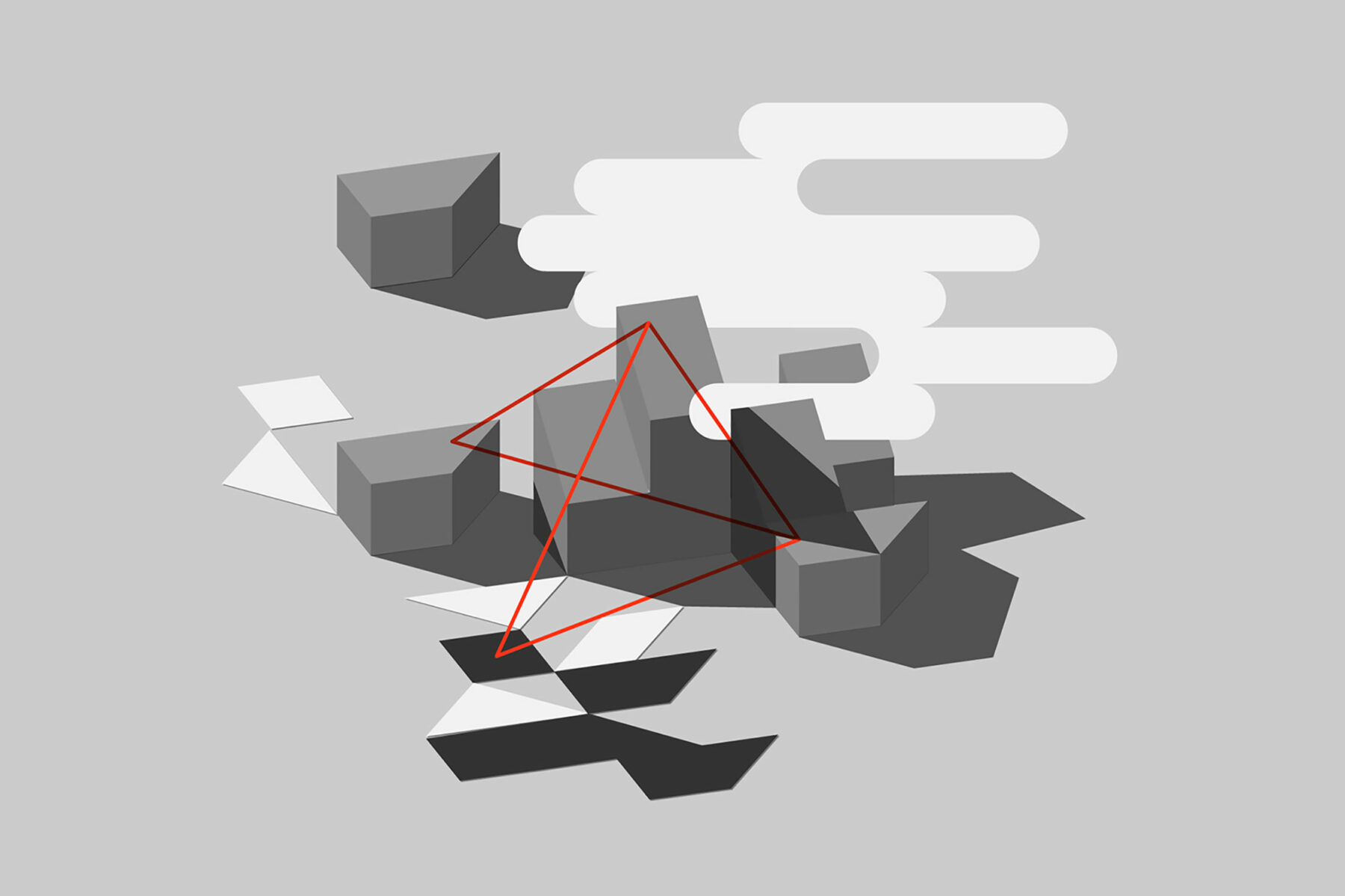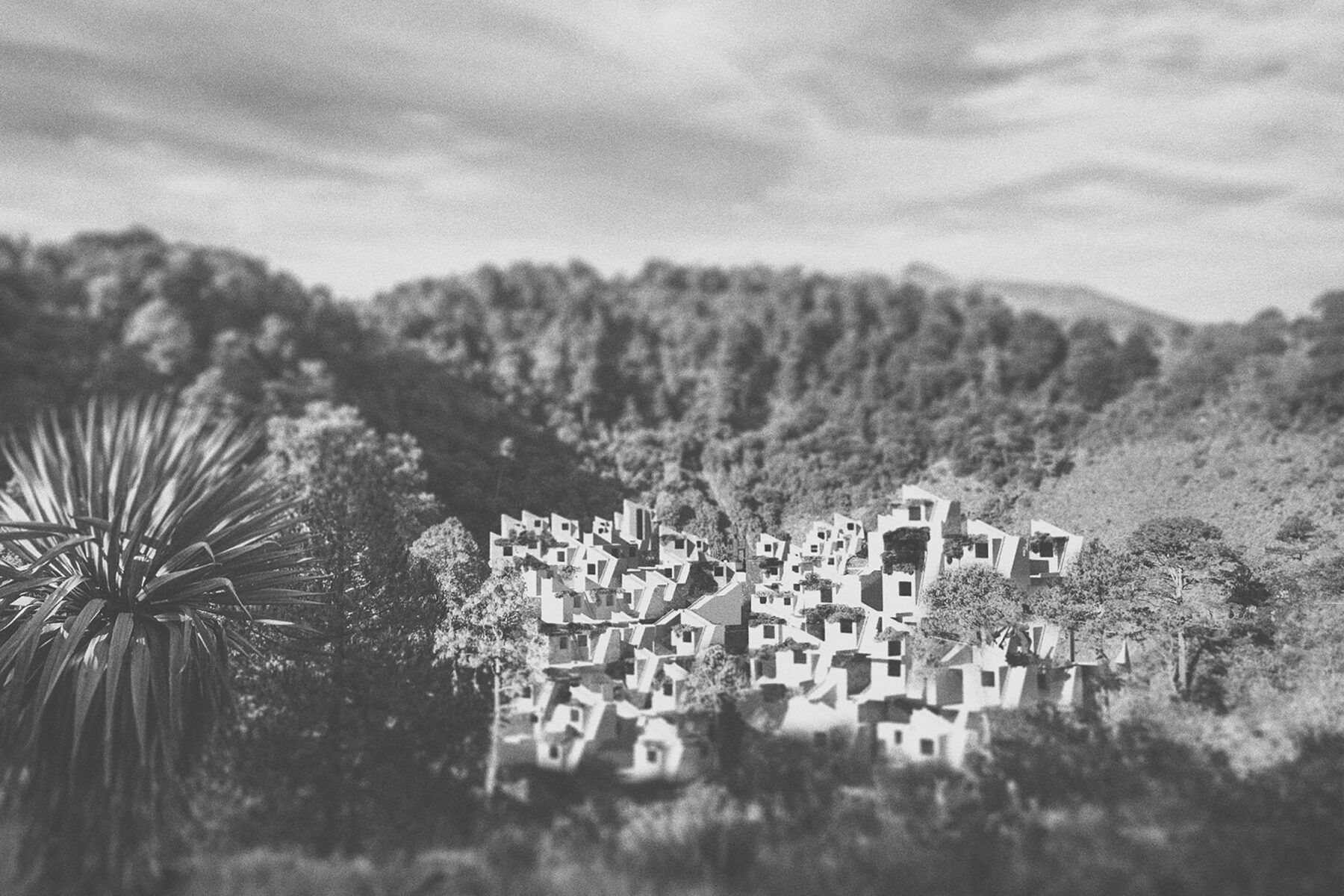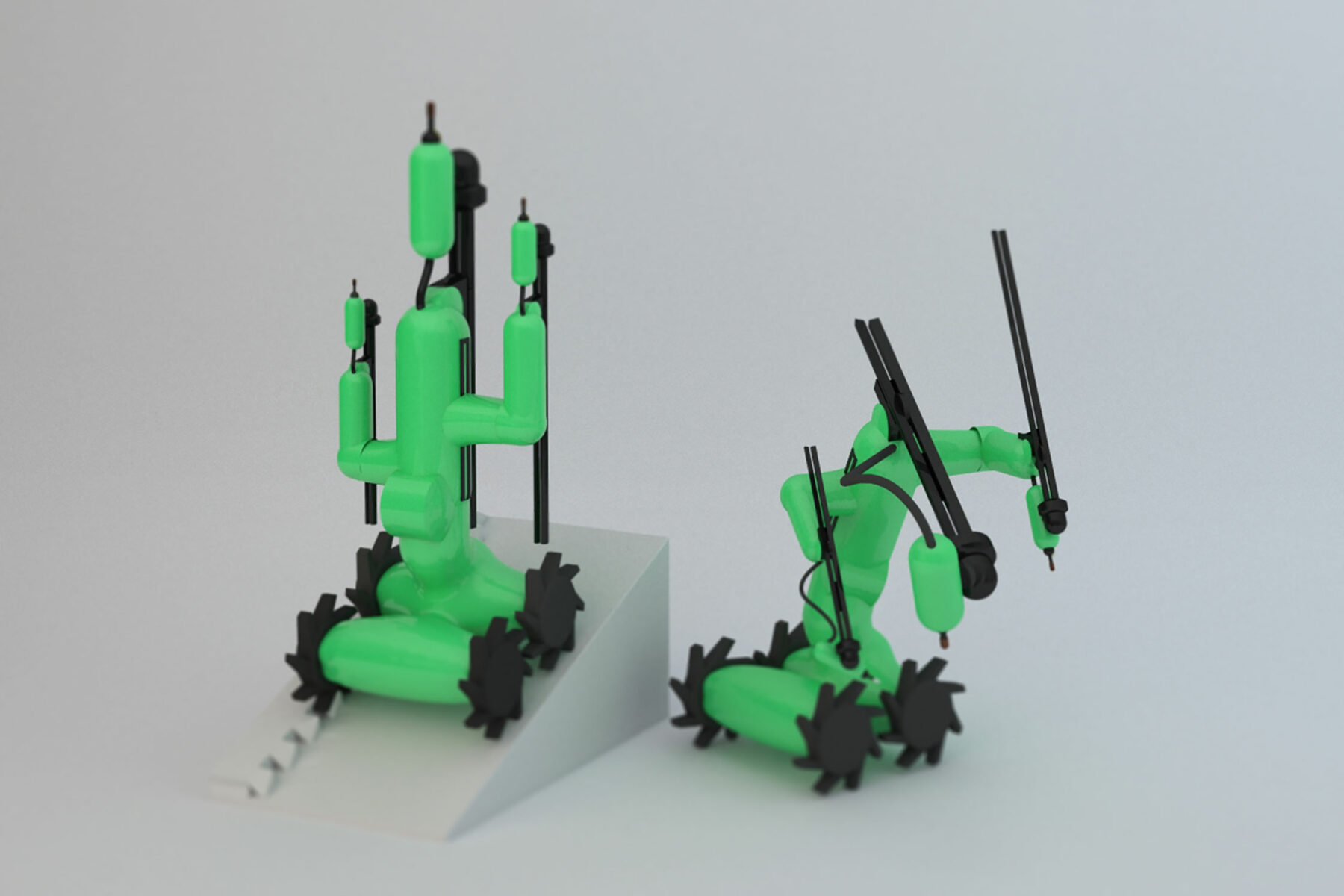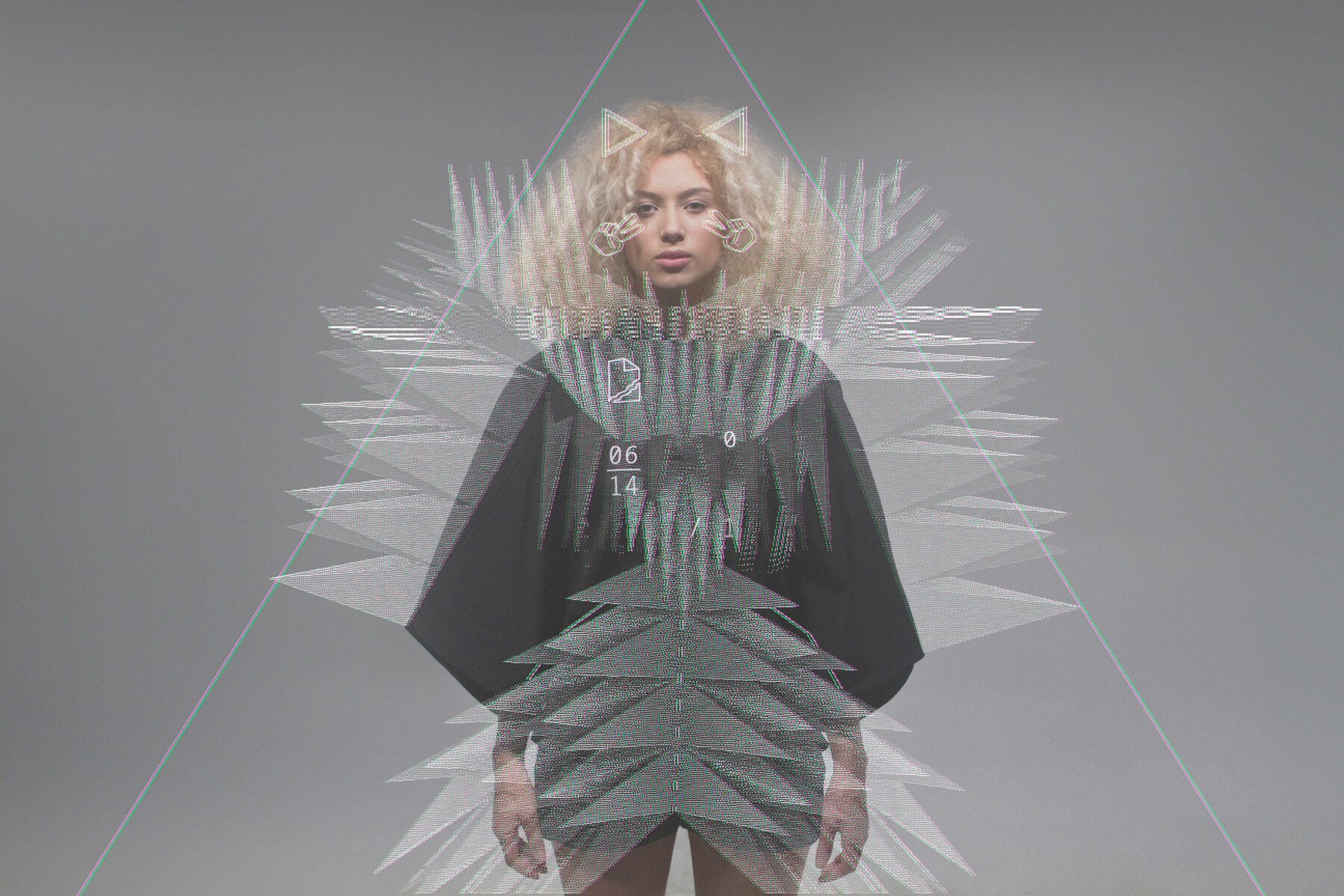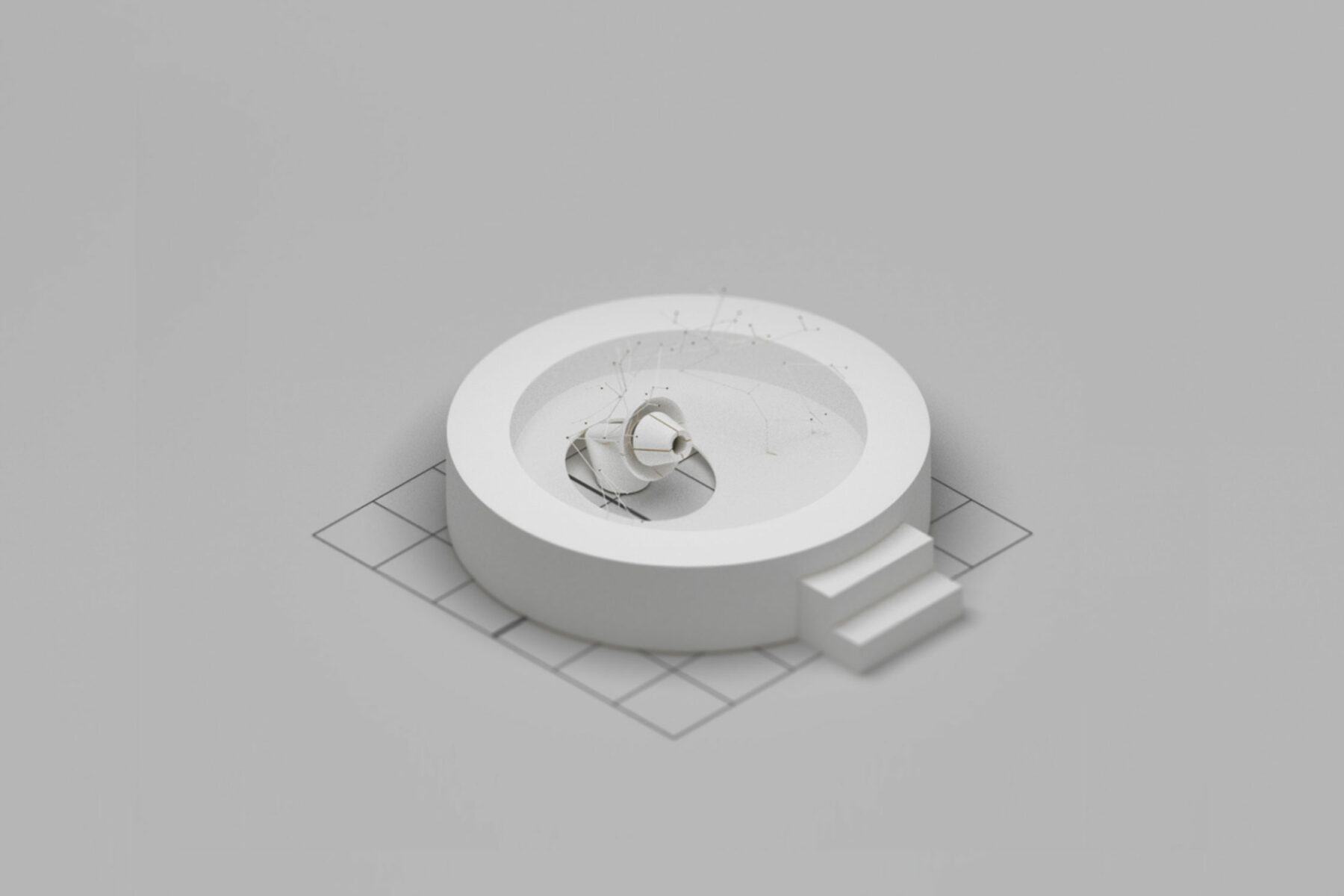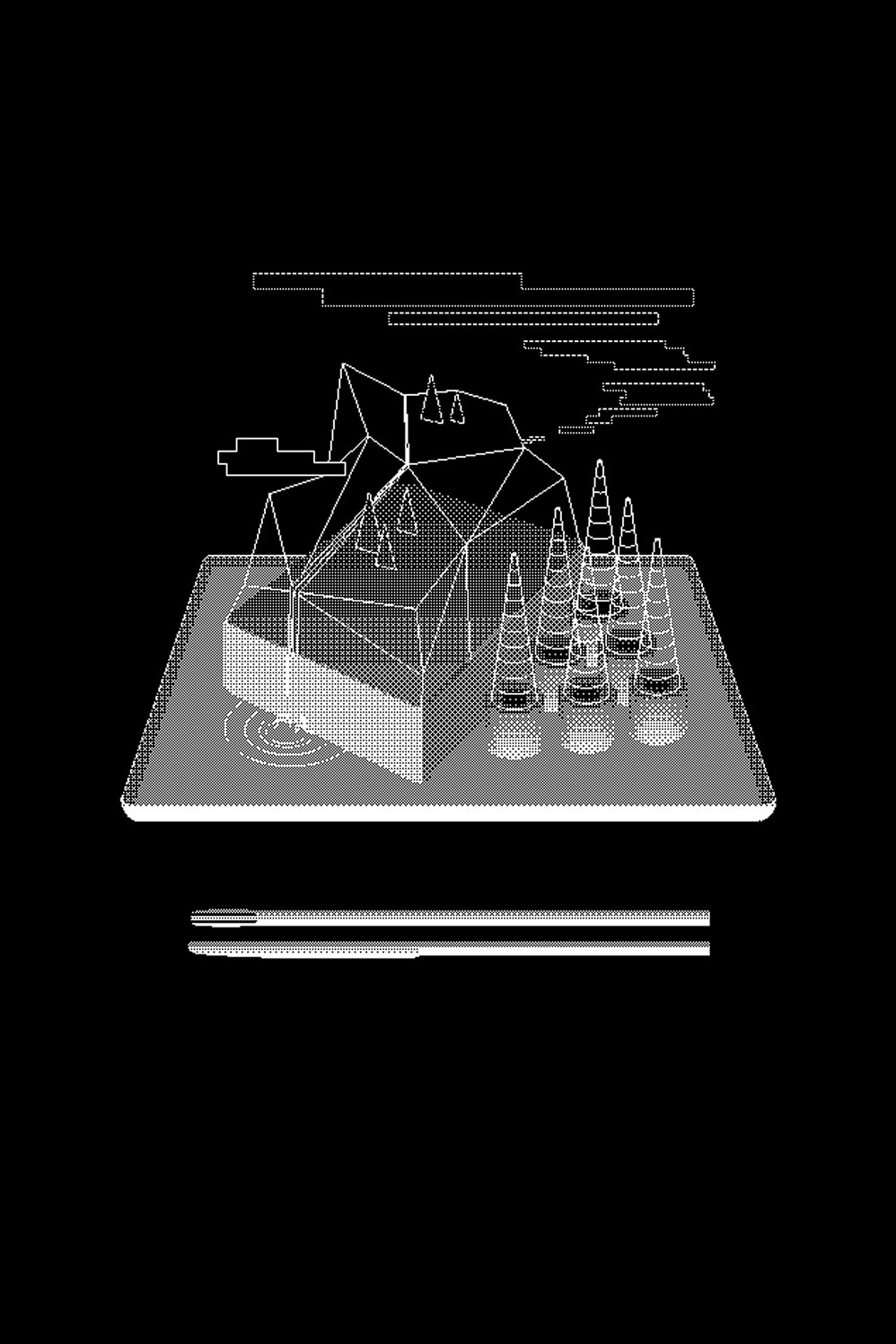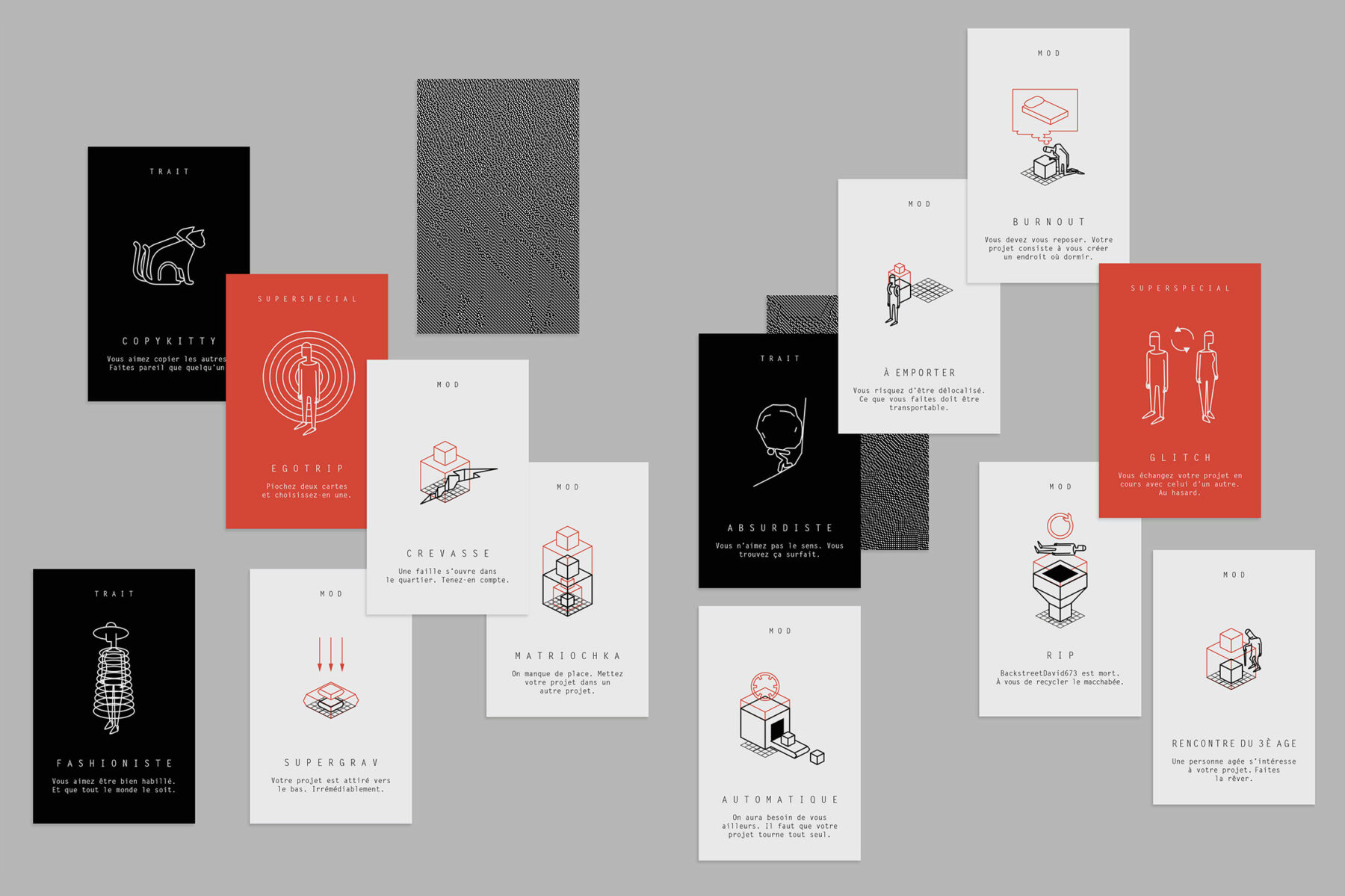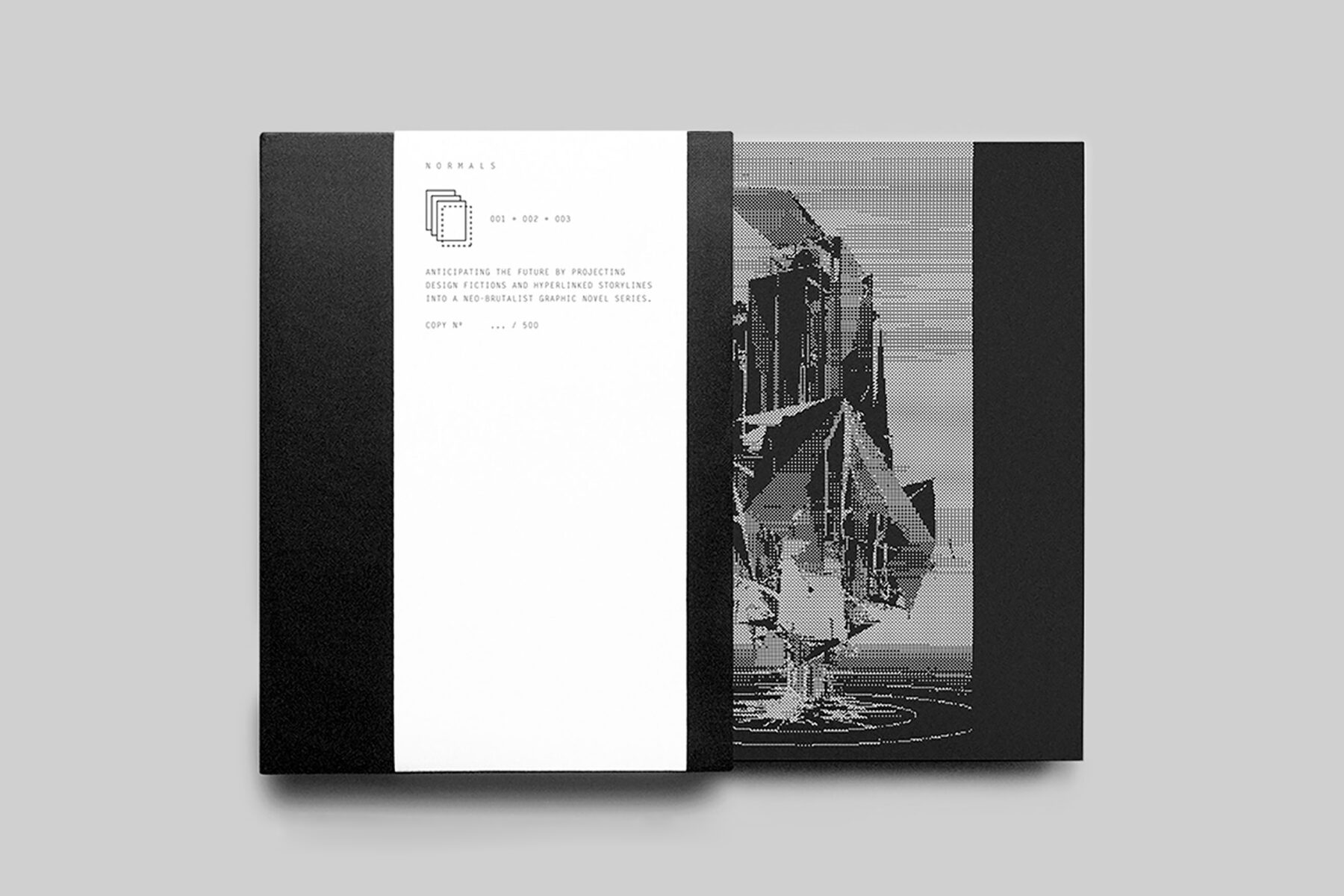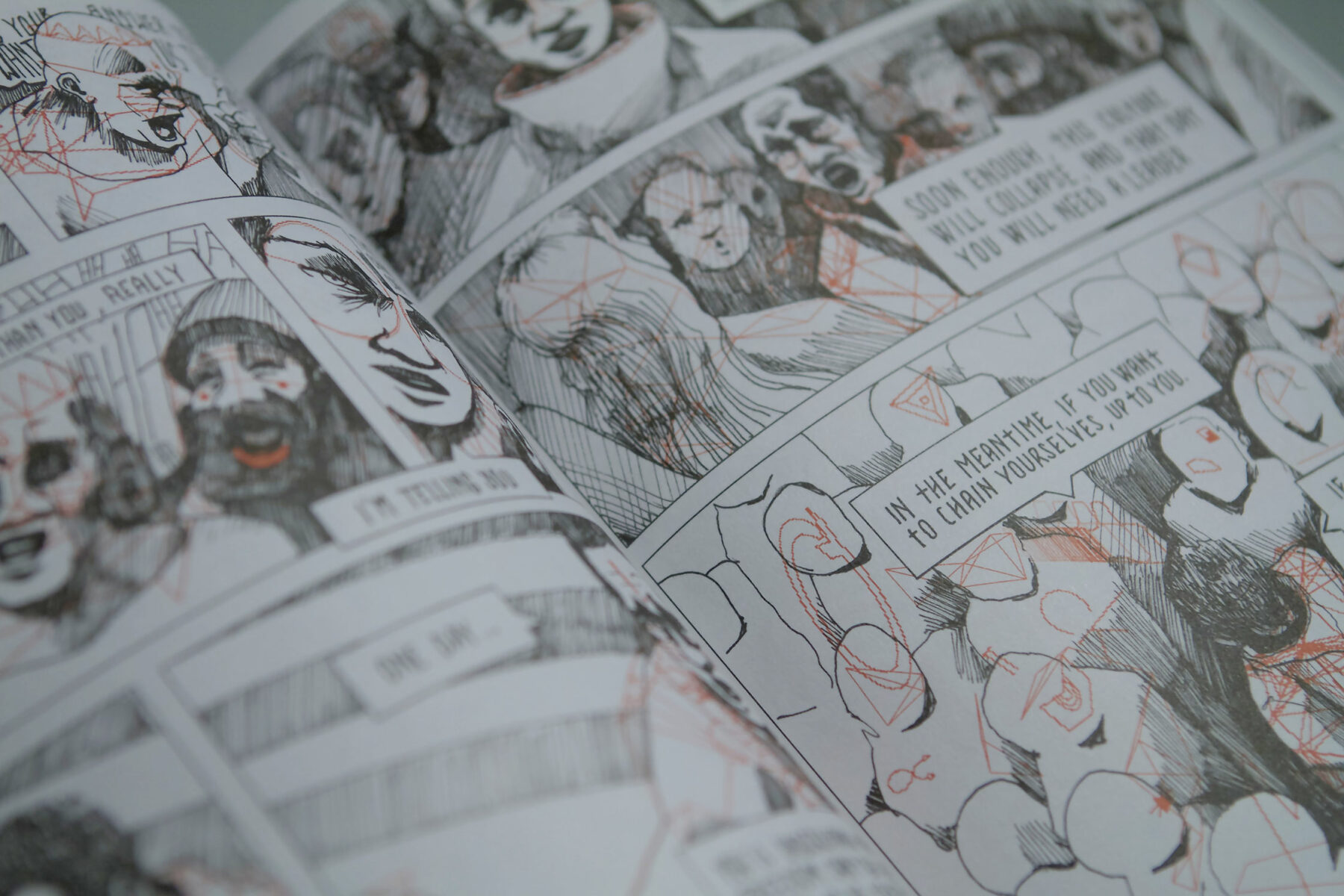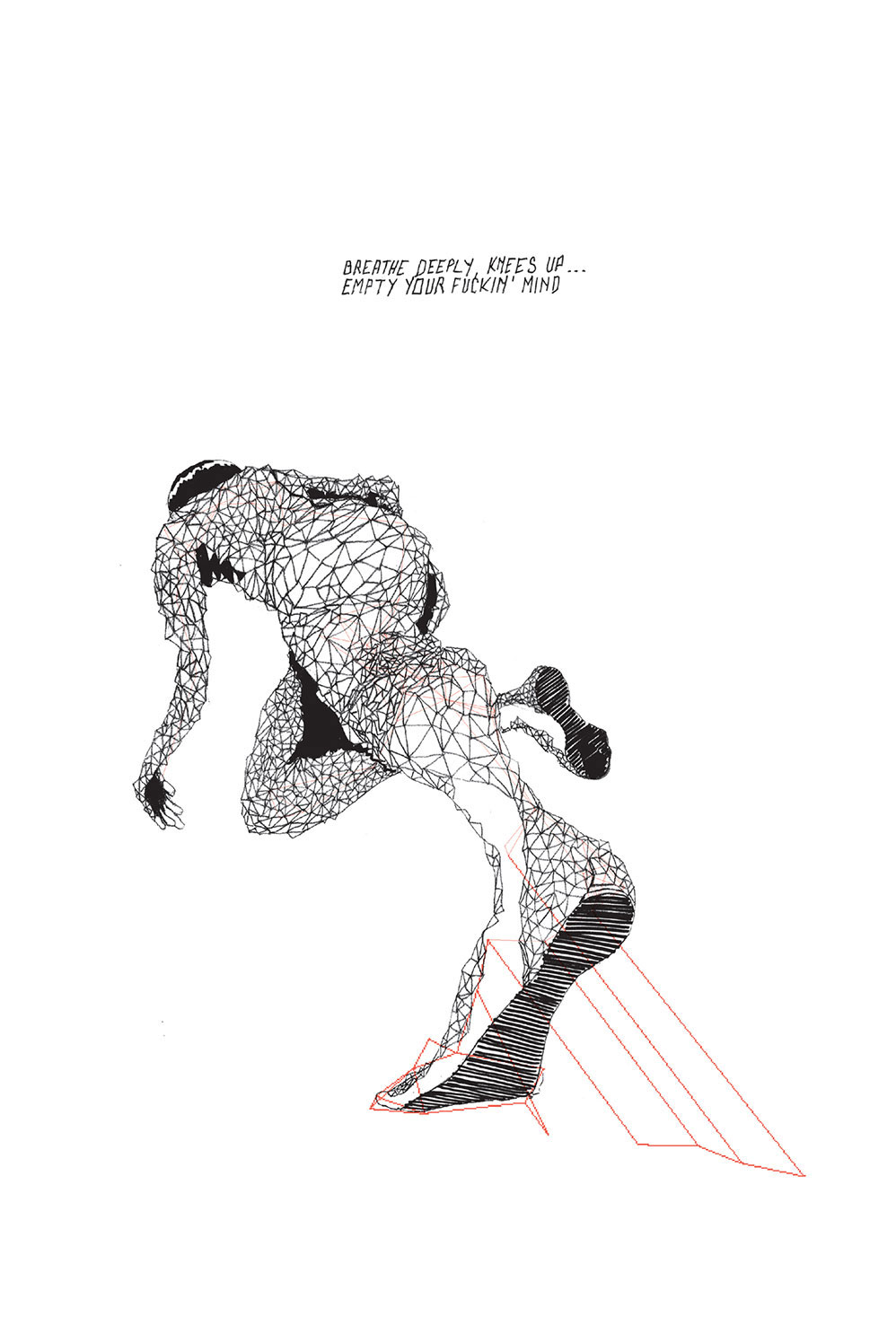“We design objects that will never exist,” quip Cedric Flazinski and Régis Lemberthe in quasi unison. It’s their go-to answer, it turns out, whenever they’re asked about what they do.
Even now, six years into working under the moniker N O R M A L S, the two Frenchmen struggle to summarize their practice in layman’s terms. “We use design and fiction to speculate about the future,” offers Flazinski, as he leans back in a slightly too small chair. It was designed by Jean Prouvé, he notes, as part of the collection of post-World War II school furniture that the famed metalworker-turned-architect created for the French Government. “Prouvé was an amazing generalist who acted as a medium between industry and society,” says Flazinski. “And although our work falls into the speculative realm we aspire to do the same.”Examining the studio’s body of fictional artifacts means entering a glitchy universe far beyond Prouvé’s wildest dreams: there’s a human birth machine template that automates solitary delivery, a food printer hack that provides continuous sustenance based on a real-time read of bodily needs, and an on-demand “substitute reality” program that renders a customizable companion in your mirror image. Each of these concepts is embedded in a carefully crafted narrative that critically explores a possible future. “It’s not predictive what we’re doing, it’s polymorphic; it’s a Frankenstein of visions.”
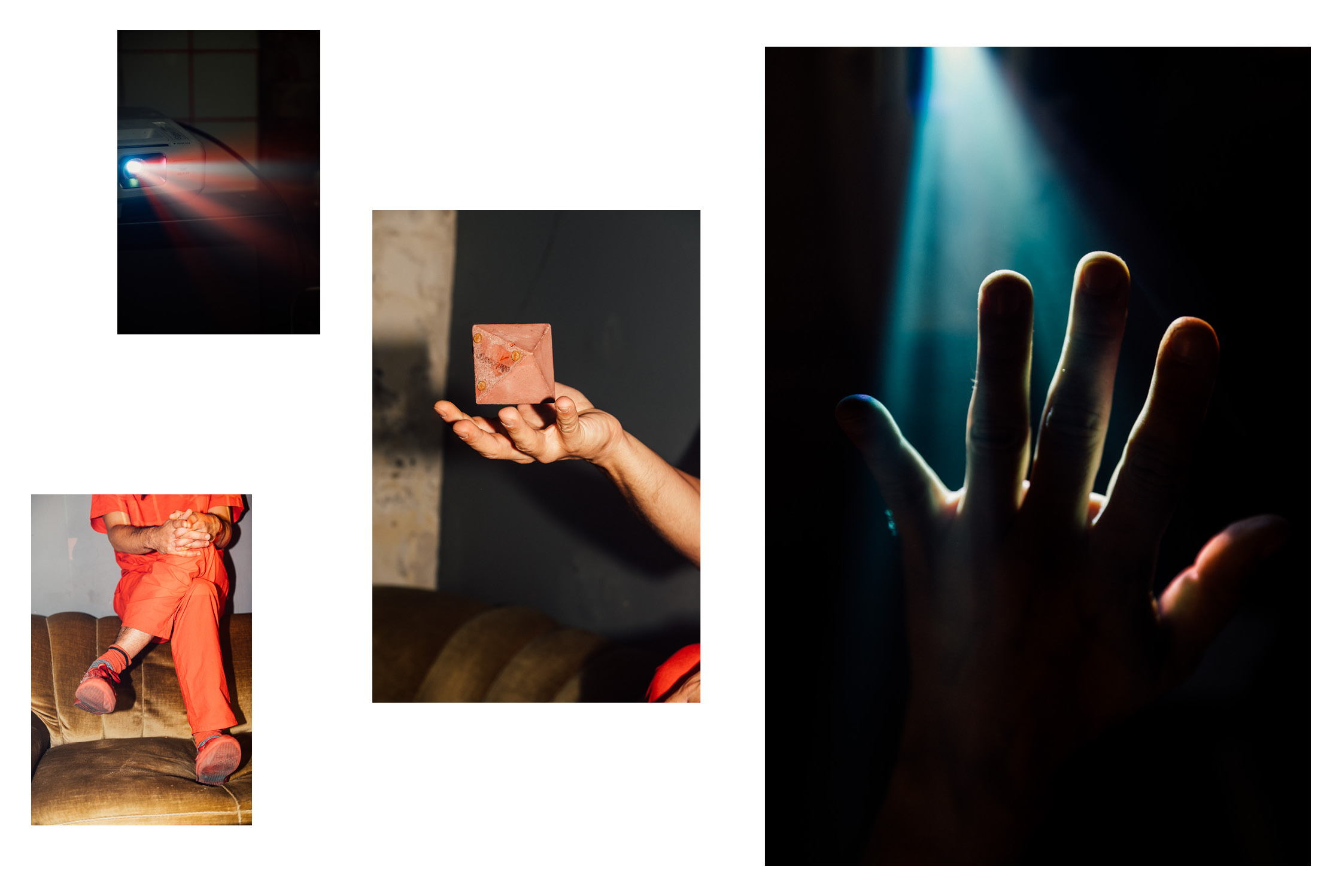
“It’s not predictive what we’re doing, it’s polymorphic; it’s a Frankenstein of visions.”
The pair’s penchant for prescient provocations was first formed while studying in the Netherlands. Following industrial design degrees in their home town of Paris, Flazinski and Lemberthe’s paths crossed again during a Masters program at the Design Academy, Eindhoven. “It was the time of the first iPhone, early social media, and nascent digital technologies that put the role of the designer in a state of flux,” recalls Flazinski. “Rather than specializing in any particular field, we were interested in using these new technologies to reclaim design as a liberal practice that touches on everything. Anchoring it in a fictional context allowed us to further remove constraints and use design as a form of social commentary.”
In 2012, when Flazinski first formed the studio together with Aurélien Michon (Lemberthe joined later), it found itself without a market. “At the time, design fiction was a tough sell and in order to explore this type of work we had to do so independently,” says Flazinski. “So we quit our jobs and used our savings to live and work together in a small Paris studio.” Here, following a strict creative routine (“Wednesday, for example, was ‘make up a fictional character’ day”), they began developing a design vocabulary through a series of self-initiated interdisciplinary works: graphic novels, music videos, card games, augmented reality fashion, which all narrated techno-futures in austere, lo-fi glory. “Our work is neither hopeful nor cynical and the raw mock-up aesthetic reflects that,” says Flazinski. “The objects we design function more like neutral placeholders for you to project your own morality into.” The name Normals was coined in a similar vein. “Most future talk gravitates towards either the utopian or dystopian with very little in between,” explains Lemberthe. “We are more interested in what a ‘normal’ future looks like and imagine it in sets of weird but mundane rituals.” True to form, their first graphic novel opens with a table replicating a cup of coffee.
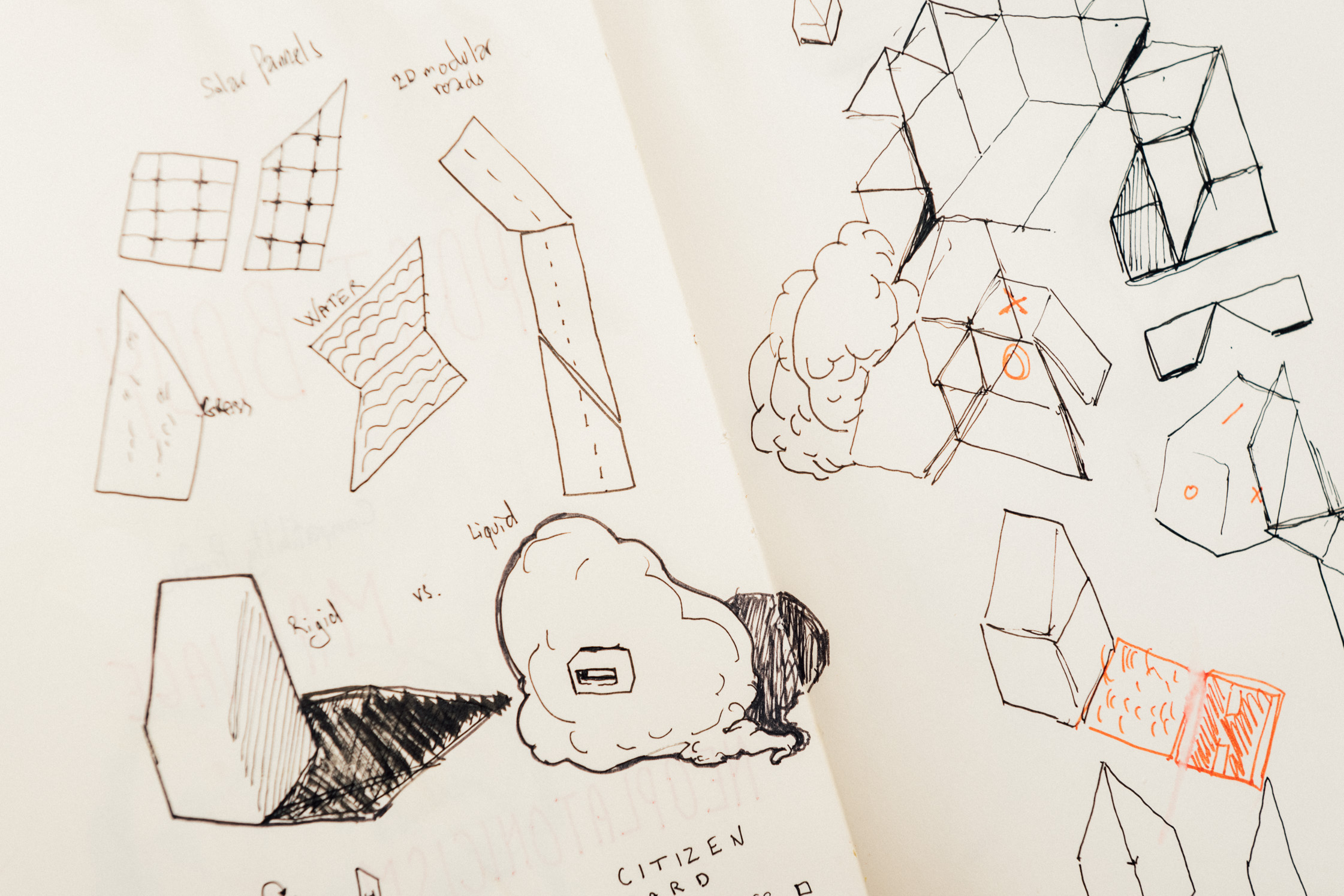
Since then, Flazinski joined Lemberthe in Berlin and design fiction is now in fashion. Over the past few years, companies as well as institutions have begun to realize that innovation can’t bypass culture. Be it new technologies or social services, innovation is shaped by its users in ways that neither engineers, marketing departments, nor focus groups can foresee. “They ask us to develop speculative scenarios around their blind spots and anticipate the public view,” says Lemberthe. “How will things be used or misused? How contagious can behavioral responses become? As designers we can envision problems, name them, and give them shape. We then act them out within a narrative, where they can inform better alternatives or actual solutions.”
In 2017, for example, Laboratorio Para La Ciudad (LabCDMX), a think tank run by Mexico City’s city council, invited Normals to think about the sprawling metropolis’ looming environmental collapse. Built on the dried-up bed of Lake Texcoco, the Mexican capital suffers from a severe lack of drinking water and is slowly sinking into its own aquifer. Experts say that a catastrophe can only be averted if a sizeable portion of the former lake is restored—a near-impossible undertaking given the city’s architectural density and current population of 21.3 million. The dire reality called for a radical fiction: pretending to be social economist Rajesh Laghari and engineer Otto Wavełski (complete with fake business cards and functioning email addresses), Lemberthe and Flazinski confronted an audience of local architects, urban planners, and policy makers with a massive relocation program that, according to the narrative, was already underway. A nearby borough had just been moved, the two proclaimed, and the attendees’ neighborhood of Xochimilco was next. The scenario was as eccentric as it was fleshed out: Elon Musk diverted Space X funds into the project to trial a future human settlement on Mars, a team of Swiss engineers supplied a specially designed robot capable of autonomously ‘printing’ entire housing districts using lakebed clay and rubble, and a corruption-proof cryptocurrency-based universal income was introduced to incentivize citizens to move. Illustrated with elaborate pseudo-evidence—machine prototypes, architectural renderings, marketing material and testimonials—the presentation had the intended effect. “Audience reactions ranged from absolutely obfuscated to ready to move in,” says Lemberthe. “And many nervously fact-checked us during the lecture.” Afterwards, the fiction was revealed as such and audience members were invited to reflect and build on the experience within the form of a workshop.
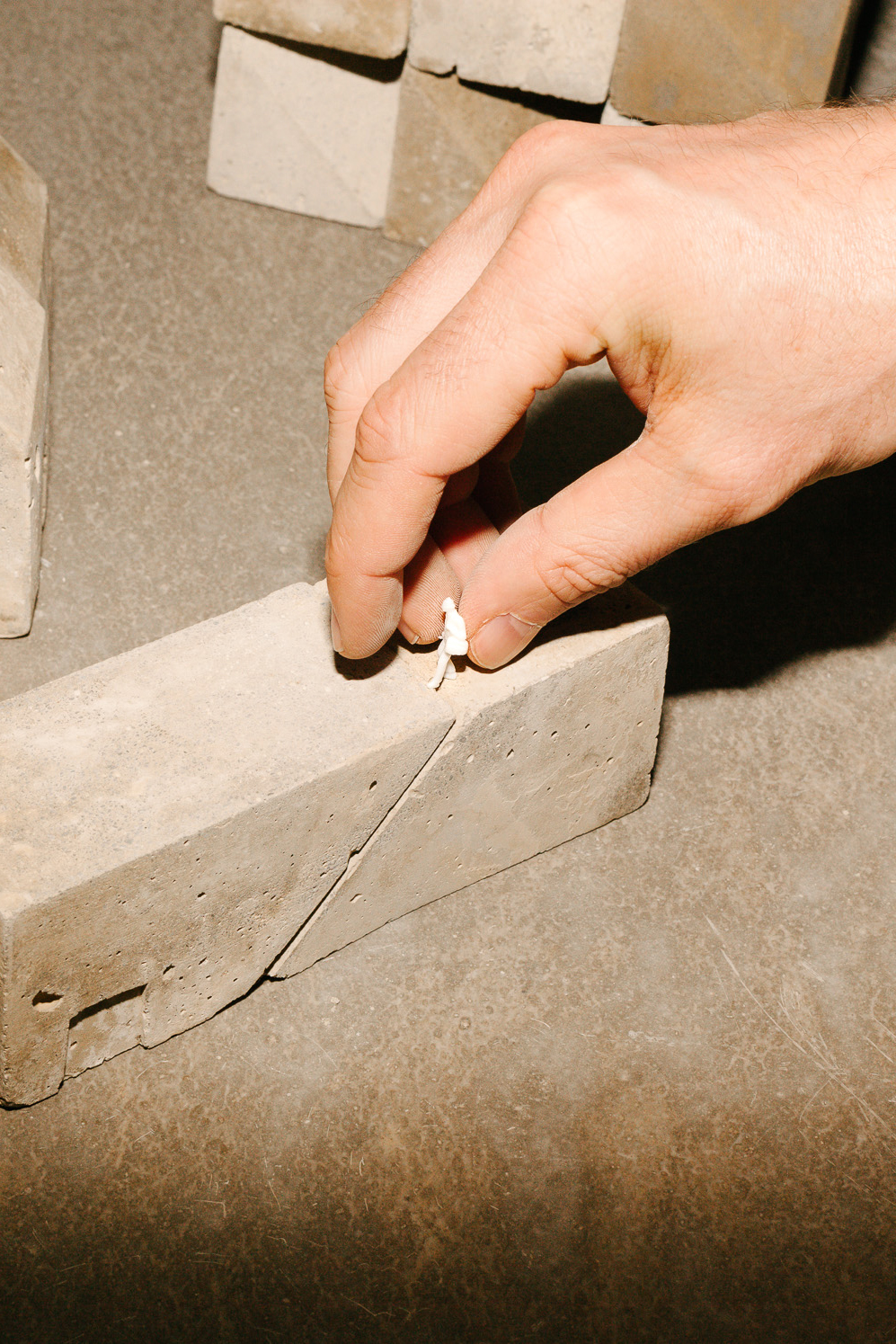
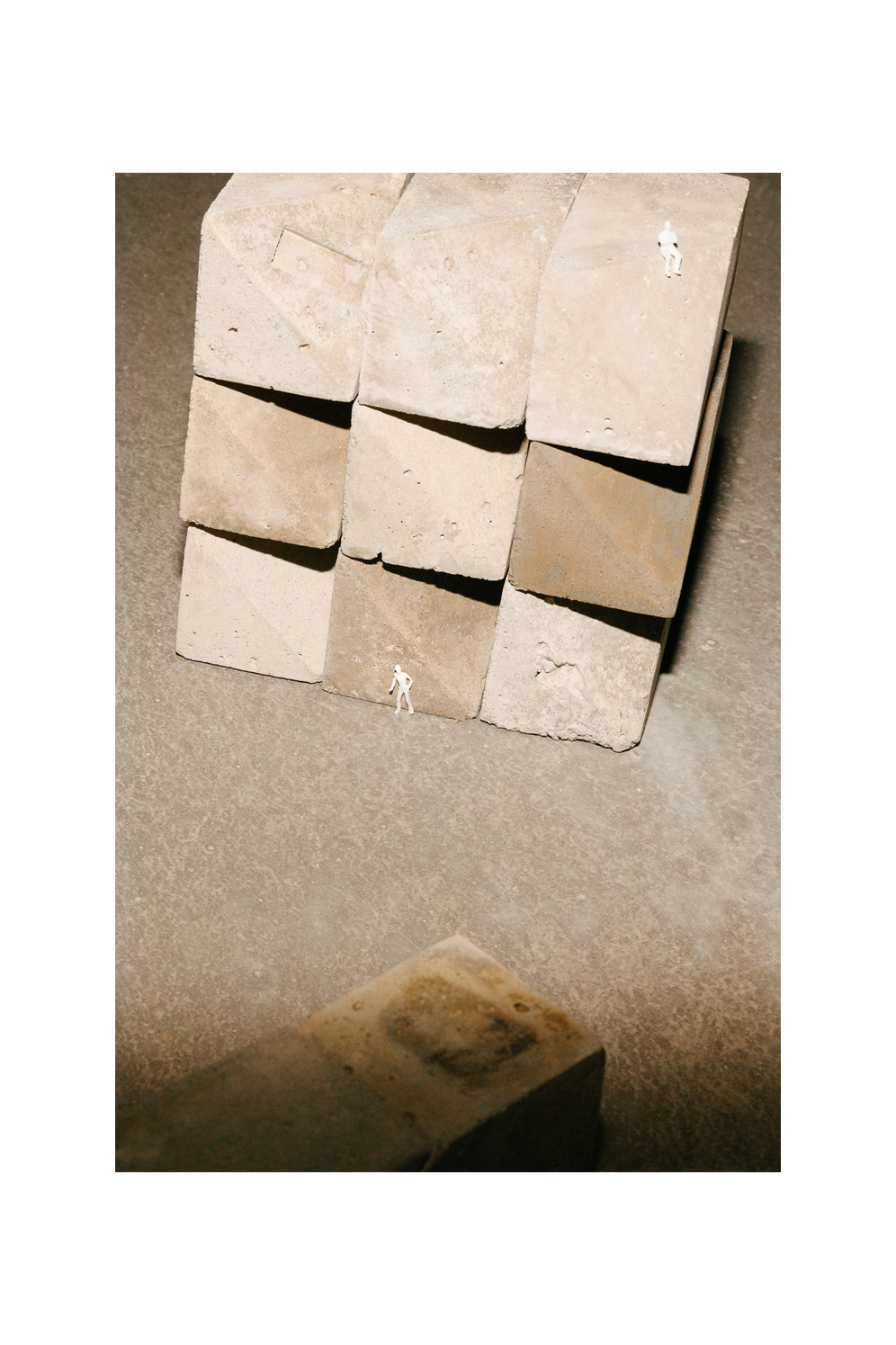
“As designers we can envision problems, name them, and give them shape. We then act them out within a narrative, where they can inform better alternatives or actual solutions.”
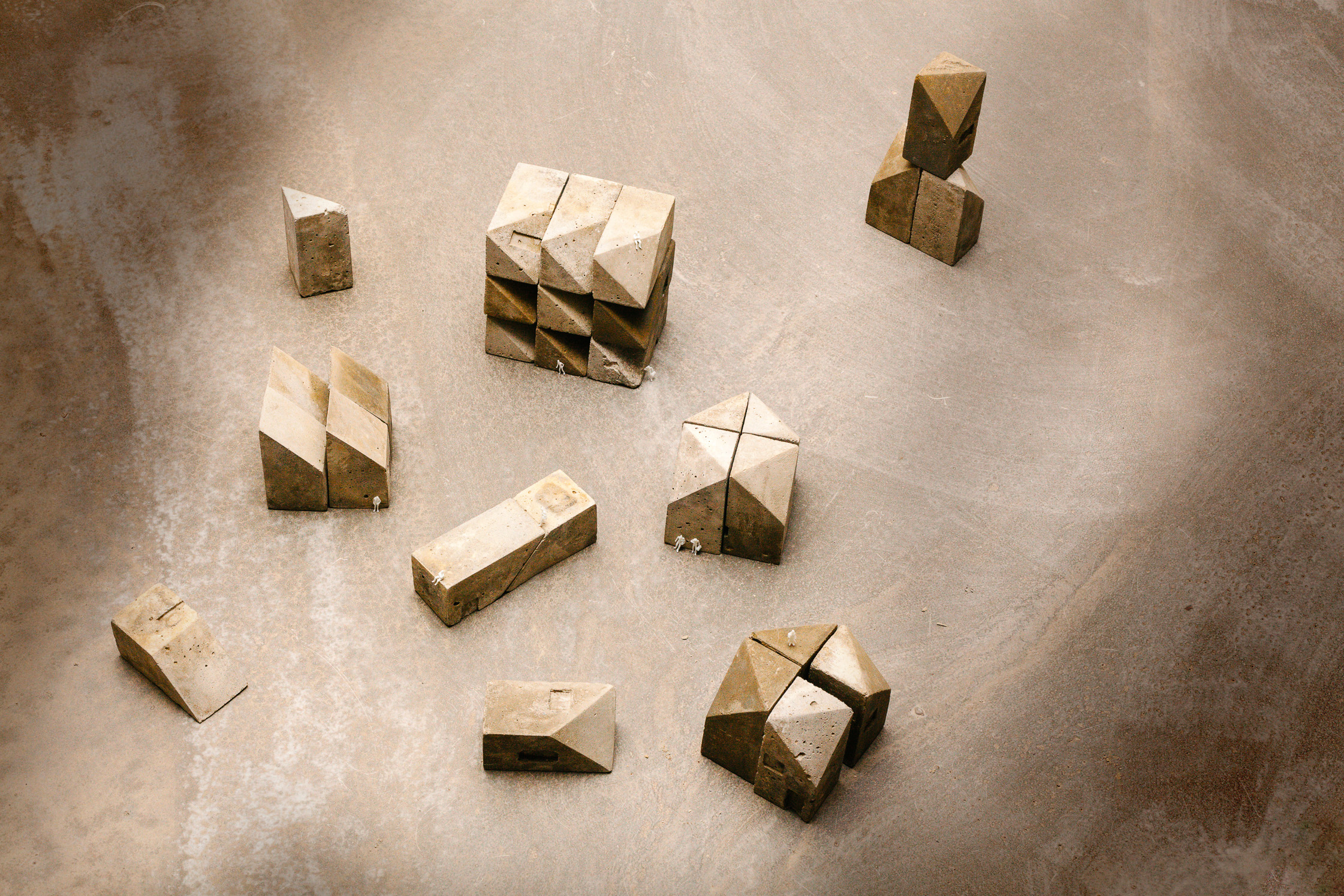
At The Sooner Now, the duo will deployed an equally eccentric narrative to get people thinking outside the box: a near-future conglomerate has purchased the remote island of Socotra to build an urban utopia from scratch. Modeled entirely by its citizens—The Sooner Now attendees—CCCC.city (“Foresee City”) revealed cultural signals and political inclinations that urban forecasts tend to overlook. “CCCC.city was part role-play, part board game, and part social experiment, and the outcome was highly unpredictable,” Flazinski explains with glee. “Over the course of the day, 200 participants got to negotiate the terms of how they want to live—from the location of their own habitat, to communal matters like energy and food production, mobility, recreation, and health.” Would people opt to build a green welfare paradise of shared goods and public services? A technological haven of automation and free enterprise? “Perhaps, CCCC.city wouldn;t resemble a city at all. Utopian or dystopian, we played this fiction out—and took it really seriously.”
Drawing on design and fiction to speculate about the future, N O R M A L S is a French artist collective known for prescient provocations in graphic novels, games, and social simulations. Their projects include A P P A R E L and CDRMX – A Fiction for Mexico City, among many others.
Cedric Flazinski and Régis Lemberthe will join The Sooner Now Berlin with CCCC.city, a collaborative city-building game especially developed for The Sooner Now.
The Sooner Now is a joint initiative by Freunde von Freunden and MINI fostering collective imaginations of urban futures. This year, the long-standing collaboration is supported by urban design magazine IDEAT. After two years of forward-thinking conversations, the event series returns to Berlin on October 13 to examine urban utopias then and now. Together with an eclectic cast of innovators—architects, designers, technologists, journalists, policy makers—we share inspiring ideas in a day-long program of dialogue, experiment, and play.
Text: Alexander Scholz

